 The budget gaming tier of GPUs exists to provide gamers good performance at a reasonable price. It’s a pretty popular segment too—the Radeon HD 5770 is the most highly used DirectX 10/11 GPs according to the most recent Steam Hardware survey. For the latest hardware generation, AMD’s Radeon HD 7700 series fills this role, and one of SAPPHIRE’s custom entries in the budget gaming market is their Radeon HD 7750 Ultimate edition.
The budget gaming tier of GPUs exists to provide gamers good performance at a reasonable price. It’s a pretty popular segment too—the Radeon HD 5770 is the most highly used DirectX 10/11 GPs according to the most recent Steam Hardware survey. For the latest hardware generation, AMD’s Radeon HD 7700 series fills this role, and one of SAPPHIRE’s custom entries in the budget gaming market is their Radeon HD 7750 Ultimate edition.
Southern Islands
Southern Islands, the family code name of the GPU in these cards, introduces a number of new and/or improved features. The gaming-central features include:
- PCI Express 3.0—The third major version of the PCI Express standard increases the per-lane bandwidth to one gigabyte per second, doubling the potential throughput of the previous generation. Currently only the top-end Radeon 7900 GPUs will be able to use this much bandwidth, but it is only a matter of time before this changes.
- PowerTune has been further improved over its previous incarnations. In the Radeon 7000 series GPUs, PowerTune can now automatically overclock your GPU as long as the board is operating within its specified power limits.
- ZeroCore Power allows the GPU to enter a very low power state during long idle periods. This is especially useful when paired with CrossfireX in non-gaming scenarios—since only one card’s power is needed, the other GPUs can be almost completely shut down without impacting performance. Southern Islands cards can draw as little as 3W when idle thanks to ZeroCore.
- Eyefinity 2.0 adds a 5×1 display setup to the list of possible configurations. The maximum combined display size has been increased to 16kx16k. Finally, the ability to have different bezel compensation sizes between displays makes Eyefinity even more useful for users with non-matched displays (previous versions of Eyefinity only allowed for a single bezel size to be configured).
- HD3D allows a single Radeon 7000 GPU to drive three Stereo 3D displays, further increasing the level of immersive gaming.
The SAPPHIRE Radeon HD 7750 Ultimate
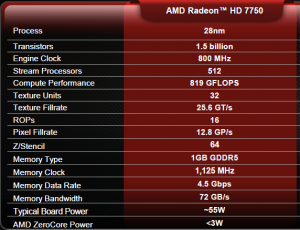 The Cape Verde group of AMD’s Southern Island GPU family is focused on the mainstream market. Cape Verde is designed for HTPC use and some gaming while maintaining a low price point. A stock Radeon HD 7750 runs $109.99 on Newegg.
The Cape Verde group of AMD’s Southern Island GPU family is focused on the mainstream market. Cape Verde is designed for HTPC use and some gaming while maintaining a low price point. A stock Radeon HD 7750 runs $109.99 on Newegg.
The SAPPHIRE Radeon HD 7750 Ultra supports up to five displays—one each on the HDMI and DVI ports, plus three from the DisplayPort (either through daisy chaining displays or using a DisplayPort hub).
The SAPPHIRE card uses a stock configuration and clocks speeds. So why the “Ultimate” moniker? The thing that sets the SAPPHIRE Ultimate apart from other Radeon HD 7750s isn’t so much what it does as much as what it doesn’t do: make a sound. The SAPPHIRE Radeon HD 7750 is passively cooled by a large two-slot heatsink. SAPPHIRE feels this distinguishing feature should command a slightly higher price over the standard cards—in this case a $20 premium. HTPC builders and gamers who desire an absolute minimal amount of noise from their system will definitely find this an acceptable deal.
For this round of benchmarks, the SAPPHIRE Radeon HD 7750 Ultimate will be put up against last year’s $100 card, the Radeon HD 6670.
Synthetic Benchmarks
3DMark Vantage
3DMark 11
Unigine Heaven
Behold the power of AMD’s GCN architecture: the Radeon HD 7750 is an absolute beast in this price range, registering 30%+ performance improvements in nearly every Futuremark test, and it’s about 2.5 times faster than the Radeon HD 6670 in Unigine Heaven.
Game performance
Crysis: Warhead
Metro 2033
Aliens vs Predator
Warhammer 40K: Dawn of War II
HAWX II
Lost Planet 2
The SAPPHIRE Radeon HD 7750 puts in a pretty impressive gaming performance. Regardless of the game and settings, it is able to beat the Radeon HD 6670 by at least 25%. Does it mean the gaming gets better, or does the budget gaming experience remain the same as last year? Let’s take a look.
Best playable settings
These are the highest settings that achieve a playable experience, meaning for all but the RTS games a minimum of 30 frames per second is required. Not all games report minimum frame rate. In those cases the average frame rate will be used along with a bit of judgement.
Lost Planet 2
Radeon HD 7750: 34.8fps avg @ 1920×1080, 4xMSAA, Motion Blur on, Shadow detail High, Texture Detail High, Rendering level High, DX11 features off.
Radeon HD 6670: 33.0fps avg @ 1920×1080, 2xMSAA, Motion Blur on, Shadow detail Low, Texture Detail Low, Rendering level Middle, DX11 features low
The gain: Much better visual features and higher antialiasing level, albeit at the cost of a minimal amount of DirectX 11 features.
Crysis: Warhead
Radeon HD 7750: 40.8fps min, 60.9fps avg @ 1920×1080, Mainstream, 8xFSAA
Radeon HD 6670: 30.0fps min, 44.0fps avg @ 1920×1080, Mainstream, 8xFSAA
The gain: Improved minimum and average frame rate. The gaming experience will be less sensitive to tasks running in the background.
Metro 2033
Radeon HD 7750: 7.85fps min, 33fps avg @ 1920×1080, DirectX 11, Medium quality, 4xMSAA, 16xAF, PhysX off, DOF disabled
Radeon HD 6670: 16.0fps min, 33fps avg @ 1920×1080, DirectX 11, Low quality, AAA Antialiasing, 4xAF, PhysX off, DOF disabled
The gain: Large increases in visuals thanks to increased quality, antialiasing, and ansiotropic filtering settings.
Note: Metro 2033 produces a few severe dips below 30fps at the start of each run. After that initial hiccup, it’s smooth sailing. Dropping to the lowest available resolution of 1024×768 yeilds the same kind of results. The same thing happened on the Radeon HD 6950, so it’s really not much to be concerned about.
HAWX 2
Radeon HD 7750: 54fps avg @ 1920×1080, 8xAA, all settings at maximum
Radeon HD 6670: 34fps avg @ 1920×1080, 8xAA, all settings at maximum
The gain: Better average (and presumably minimum) frame rates.
Warhammer 40K: Dawn of War II
Radeon HD 7750: 16fps min, 57.8fps avg @ 1920×1080, Ultra settings
Radeon HD 6670: 11fps min, 32.0fps avg @ 1920×1080, Ultra settings
The gain: Better frame rates at maximum settings. Can’t argue with that.
Looks like a year has really improved expectations for the mainstream segment. None of our games needs to be run any lower than 1920×1080, and even with increased quality settings performance is better than last year’s Radeon HD 6670.
Eyefinity gaming
Of course, the real torture test for gaming isn’t a simple HD resolution display.The Eyefinity setup has seen a bit of an upgrade to a resolution of 3600×1920—a 30% increase over the previous 5040×1050 setup. This means an even tougher challenge for GPUs.
Crysis: Warhead: 27.13fps min*, 44.49fps avg @ 3600×1920, Performance, 8xFSAA
*this is what was reported, though I never once saw the numbers dip below 30fps, nor did the game stutter.
HAWX 2: 39fps min @ 3600×1920, 0xAA, all other settings at maximum
Warhammer 40K: Dawn of War II: 23.49fps avg @ 3600×1920, High settings
Lost Planet 2: 24fps avg @ 3600×1920, all settings low or off. It’s almost good enough, but not quite.
Metro 2033: 8.65fps min, 20.33fps avg @ 3600×1920, DirectX 11, Low quality, AAA Antialiasing, 4xAF, Physx off, DOF disabled. Not playable.
True, not every game is playable at this resolution. But the thing to keep in mind is these resolutions are meant for higher-end configurations and mainstream cards are only beginning to be able to play them.
Conclusion
 The bar for budget gaming performance has been raised substantially thanks to the Radeon HD 7750. Not only is 1920×1080 a reasonable expectation, but a number of quality settings can be increased as well. Sometimes it’ll even run a game at insane resolutions. The bottom line here is that SAPPHIRE has a great mainstream GPU in their Radeon HD 7750 Ultimate. The $20 premium over a stock cooler seems to be a pretty fair trade for silence, especially in an HTPC configuration. If you are on a limited upgrade budget and need better gaming performance over integrated graphics or an aging gaming card, the SAPPHIRE Radeon HD 7750 Ultimate is an excellent choice. We’re happy to award it our silver Outstanding Product award for excellence; a passively cooled, totally silent GPU that’s affordable and plays almost any game out there at reasonable settings. Excellent work, SAPPHIRE.
The bar for budget gaming performance has been raised substantially thanks to the Radeon HD 7750. Not only is 1920×1080 a reasonable expectation, but a number of quality settings can be increased as well. Sometimes it’ll even run a game at insane resolutions. The bottom line here is that SAPPHIRE has a great mainstream GPU in their Radeon HD 7750 Ultimate. The $20 premium over a stock cooler seems to be a pretty fair trade for silence, especially in an HTPC configuration. If you are on a limited upgrade budget and need better gaming performance over integrated graphics or an aging gaming card, the SAPPHIRE Radeon HD 7750 Ultimate is an excellent choice. We’re happy to award it our silver Outstanding Product award for excellence; a passively cooled, totally silent GPU that’s affordable and plays almost any game out there at reasonable settings. Excellent work, SAPPHIRE.
The SAPPHIRE Radeon HD 7750 Ultimate is available on Newegg for $124.99


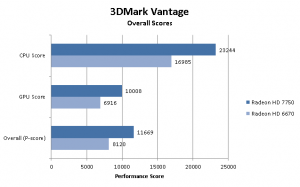
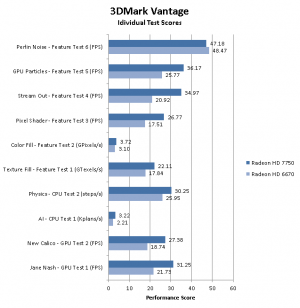
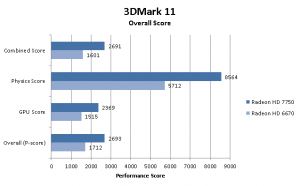


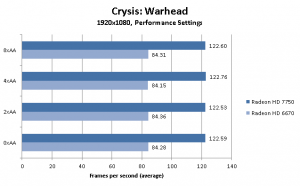
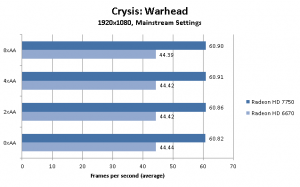
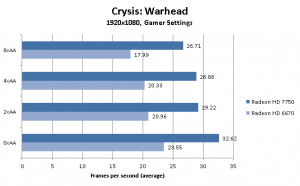
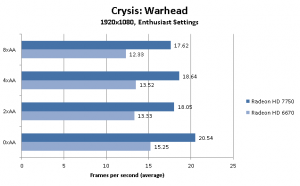
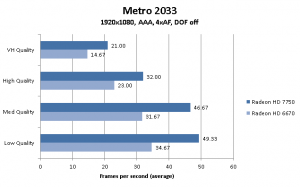
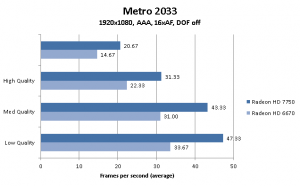

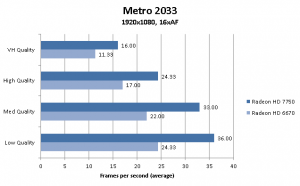
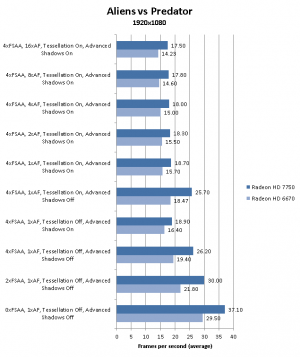
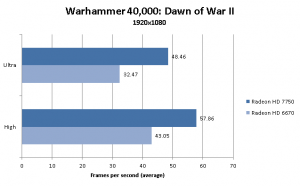

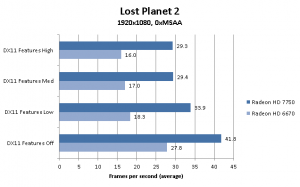
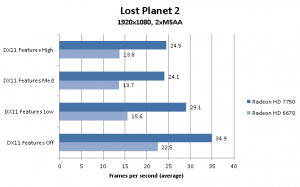

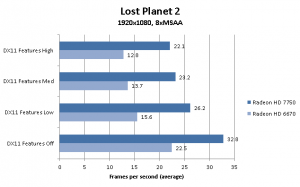





 Articles RSS
Articles RSS